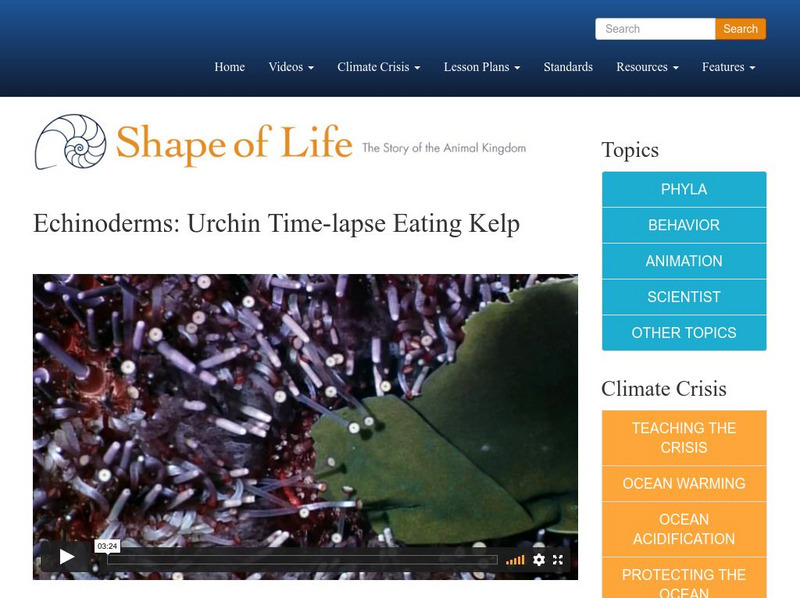SciShow
Wolves Have Taken Over a Marine Ecosystem
Wolves are amazing hunters, so they tend to be apex predators wherever you find them...including one region in Alaska where these land-based predators sit atop a marine food web.
PBS
How the Starfish Got Its Arms
The story of how the starfish got its arms reminds us that even animals that might be familiar to us today can have incredibly deep histories - ones that stretch back almost half a billion years.
TED Talks
TED: The ocean's glory -- and horror | Brian Skerry
Photographer Brian Skerry shoots life above and below the waves -- as he puts it, both the horror and the magic of the ocean. Sharing amazing, intimate shots of undersea creatures, he shows how powerful images can help make change.
Bozeman Science
Biodiversity
Paul Andersen explains the importance of biodiversity. He starts by describing how biodiversity can be species, genetic or ecosystem diversity. He explains the importance of keystone species in an environment and gives two examples; the...
TED-Ed
TED-ED: The science of symmetry - Colm Kelleher
When you hear the word symmetry, you might think generally of triangles, butterflies, or even ballerinas. But defined scientifically, symmetry is _a transformation that leaves an object unchanged." Huh? Colm Kelleher unpacks this...
Curated Video
Sea otters
The vital role of sea otters in maintaining a food web. Life processes - Living things in their environments - Food webs Learning Points Omnivores eat both plants and other animals. An organism can belong to several food chains. A...
Brave Wilderness
IT'S HUGE! And Covered in WARTS!
On this episode of Beyond the Tide, Coyote and the crew go tide pooling at night and discover three different species of HUGE Sea Cucumbers! There are many species of Sea Cucumbers that can be found all over the world but it isn’t every...
Curated Video
I WONDER - Where Do Invertebrates Live?
This video is answering the question of where do invertebrates live.
Science360
Ocean Acidification -- Changing Planet
As higher amounts of carbon dioxide become absorbed by the oceans, some marine organisms are finding it's a struggle to adjust. The Changing Planet series explores the impact that climate change is having on our planet, and is provided...
Brave Wilderness
Making a Tide Pool Aquarium
On this episode, Mark takes you tide pooling for #CampYouTube! Watch as Mark shows you how to build a tide pool aquarium full of brittlestars, sea stars, and more! Get ready to meet some super cool Tide Pool creatures!
California Academy of Science
Spiky Sight
Can an organism with no eyes still see? As it turns out for the purple sea urchin, the answer is yes. In a short video, scientists explain why they believe that some sea urchins can use their spikes to visually sense the environment.
Sea Studios Foundation
Shape of Life: Echinoderms: Urchin Time Lapse Eating Kelp
Want to learn more about how a sea urchin eats? Watch this video to see a sea urchins using their sensory tube feet to catch drifting kelp and carry it to its mouth on the underside. Also view how the sea urchin uses its five-part jaw to...
California Academy of Sciences
California Academy of Sciences: Spiky Sight
Sea urchins have no eyes or visual organs, but researchers are proving that they do, in fact, see. [1:36]



